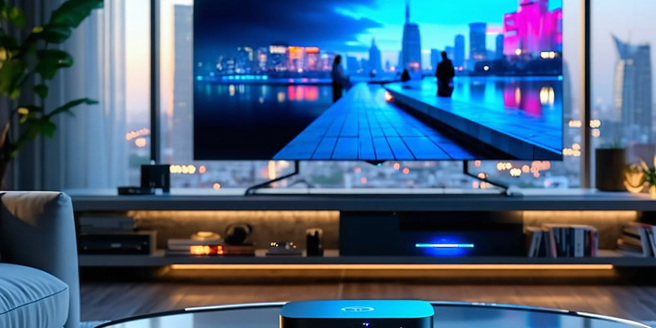Smart Home Device Trends

Emerging Technologies in Smart Home Devices
The smart home industry is rapidly evolving with emerging technologies redefining convenience and efficiency. Devices are becoming more intuitive, leveraging advancements in artificial intelligence, IoT, and machine learning. Smart thermostats now learn our preferred settings, while voice assistants provide seamless control over integrated home systems. Moreover, the shift towards matter protocol promises a unified approach, enhancing compatibility between gadgets of different brands. 5G technology ensures faster and more reliable connectivity, enabling devices to work more efficiently. Breakthroughs in sensor technology allow for more precise monitoring, whether it’s for detecting water leaks or optimizing energy use. As these trends progress, the focus remains on creating a more personalized home environment that’s not only smart but also adaptive to user needs and preferences, paving the way for a more connected future.
The Rise of AI-Powered Home Assistants
AI-powered home assistants are significantly changing how we interact with our homes. These devices, such as Amazon’s Alexa, Google Home, and Apple’s Siri, have evolved from simple task executors to sophisticated tools capable of understanding and predicting user needs. They can manage schedules, control home automation systems, and even learn preferences to provide customized responses. With advancements in natural language processing, these assistants now have improved conversational abilities, making them indispensable in managing daily tasks. They also play a pivotal role in enhancing accessibility for users with disabilities by offering voice-controlled interfaces. As AI technology continues to evolve, we can expect even more intuitive interactions, allowing these digital assistants to become central hubs in our smart homes, effectively bridging the gap between human needs and technological solutions.
Sustainability and Energy Efficiency Innovations
Sustainability and energy efficiency are at the forefront of smart home innovations. With the growing emphasis on reducing carbon footprints, smart devices are now designed to optimize energy usage and promote eco-friendly living. Solar-powered smart appliances, energy-efficient smart thermostats, and lighting systems that adjust to natural light conditions are just a few examples. These technologies not only contribute to environmental conservation but also result in significant cost savings on energy bills. Smart meters and connected energy management systems provide real-time insights into energy consumption, enabling homeowners to make informed decisions to reduce wastage. Integrating renewable energy sources with smart home technology underscores a commitment to sustainable living. As we move towards greener solutions, smart homes are becoming instrumental in achieving global sustainability goals, reflecting a collective effort towards a more eco-conscious future.
Integrating Security Features in Smart Homes
Security is a critical component of the smart home ecosystem, driving innovations in integrated safety solutions. Smart locks, surveillance cameras, and doorbell cameras now offer advanced features such as facial recognition, motion detection, and real-time alerts. These devices are often connected to mobile applications, allowing homeowners to monitor and control their security systems remotely. The integration of AI facilitates proactive security measures, such as learning routine behaviors to identify anomalies. Biometric access and encrypted data transmission ensure that personal information and property remain secure. Moreover, cybersecurity measures are increasingly being considered to protect against potential hacks and breaches. As smart home adoption grows, the emphasis on security integration ensures that these environments are not just convenient and efficient, but also safe and reliable, offering peace of mind to users.
Interoperability Between Smart Devices
Interoperability is crucial for creating a cohesive smart home ecosystem where devices from different manufacturers can seamlessly communicate and function together. The lack of standardization has long been a challenge, but initiatives like the Matter protocol are paving the way for a more unified approach. This protocol, supported by major tech giants, promises to break down barriers by allowing devices to operate on a common platform, regardless of brand. Consequently, users can enjoy comprehensive control over their smart homes without being tied to a single manufacturer’s ecosystem. This development encourages innovation and competition in the market, ultimately benefiting consumers. As interoperability improves, the smart home experience becomes more streamlined and accessible, enabling homeowners to build versatile and tailored smart environments that align with their individual needs and preferences.
Future Predictions for Smart Home Trends
The future of smart homes is poised for transformative growth as technology continues to evolve at a rapid pace. We anticipate a surge in the adoption of fully integrated systems, where different smart devices work collaboratively to enhance user experience. Augmented reality and virtual reality could revolutionize home entertainment and design customization. Additionally, advances in AI will likely lead to smarter predictive analytics, allowing homes to adapt dynamically to resident preferences. The focus on sustainability will drive the development of zero-energy homes powered by renewable sources. Moreover, with the increasing importance of personal data security, sophisticated encryption techniques will be integrated into smart devices as a standard feature. As these innovations take shape, smart homes will not only become technologically advanced but also more attuned to the well-being and sustainability goals of their inhabitants.